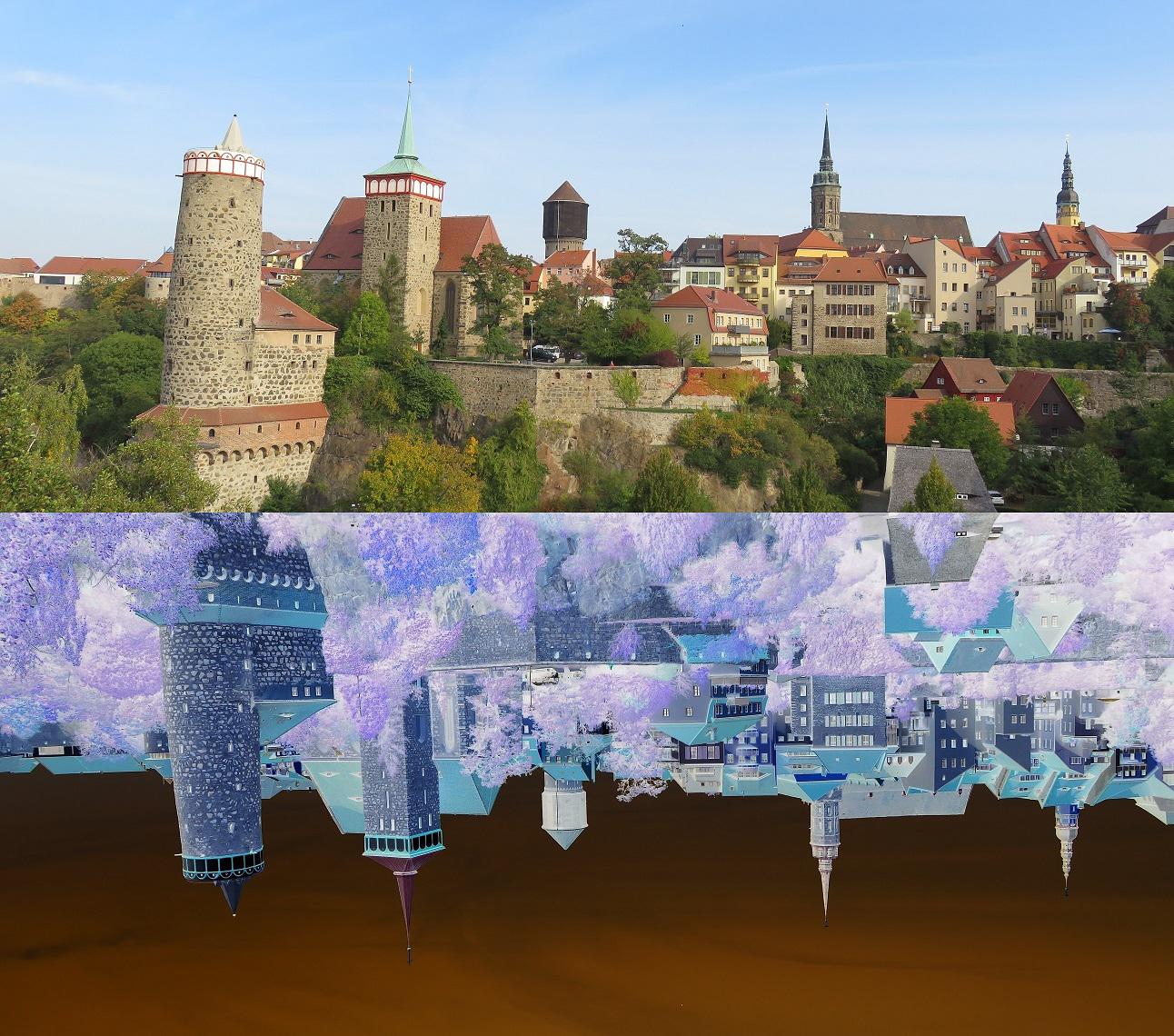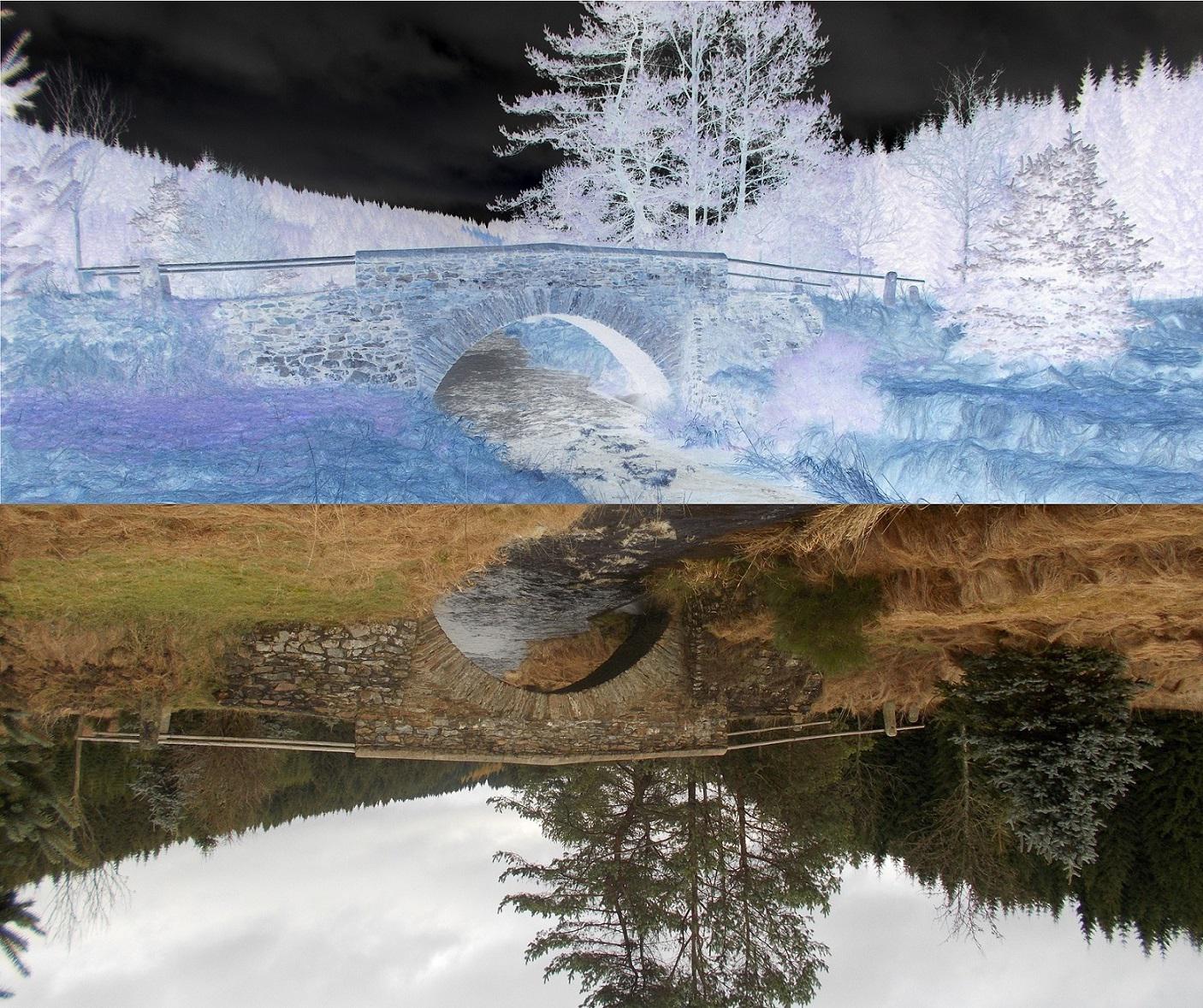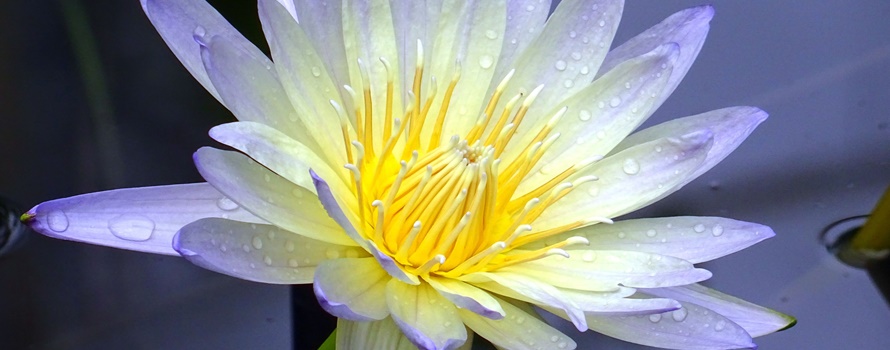Features and Rules of the Astral Planes
Design Rules of the Astral Worlds
The outer appearance of astral planes and the otherworldly beings is in the first place determined by the psyche and the habits of the beings living there, whether they are deceased humans or not. For this reason, the design rules applying to these spheres are in many cases similar to dream symbology.
If we want to come closer to the principles of the astral world, then it’s best if we observe our dreams and learn about and get used to the rules and features which are inherent in dreams. In this way, soon we’ll see that heaven and hell are resulting automatically as projections of our psyche in the astral, with its tensions and aggressions, and with its harmony and loving affection.
After the guiding principle of the Tabula Smaragdina of Hermes Trismegistos, the world beyond has rules that are analogous to those of our physical world – and, interpreted in a broader sense, also of the inner world of our psyche.
"As above, so below – as within, so without" (Hermes Trismegistos, Tabula Smaragdina)

As above, so below …
Planes
The astral planes are no places of reward or punishment, but they result from psychic mechanisms – e. g. self-punishment, the urge to act out one’s feelings and wishes, or lacking mental control. With growing knowledge about transcendental rules and with increasing inner harmony, the astral people are able to manage themselves in a better way and so they create better conditions for their existence.
Heaviness
In the lower planes, a feeling of heaviness occurs. This heaviness can be experienced in different ways individually. It could be said that it is an inner fatigue that makes the body heavier. In the higher planes, it is quite the contrary. You can see these differences even on earth: one feels lighter when being happy, and children often begin to jump or dance around.
Brightness
The lower planes are often experienced as being dusky, or similar to a clouded winter’s day. The higher planes are characterised by brightness and luminous colours.
Attempts of local illumination on astral travels:
Through effort of will, a certain radius around the astral traveller can be illuminated (and elevated in it’s auric vibe), at least short-term. As soon as the traveller looses concentration, the changed surroundings fall back into their initial state (that means, the collective quality dominates again).
Visibility
From a lower point, higher planes cannot be seen – but the opposite is possible. With a bit of practice it is possible on higher planes to ‘look through the ground’ so as to focus on lower planes.
Transition states
The terms "higher" and "lower" planes are justified in so far as it is possible to change planes via stairs, shafts etc. (i. e. transition on different levels of "height"). Although these terms are in the first place corresponding to the quality of an astral plane, it seems that a lower plane does also correspond to a place rather "down below", whereas higher planes are experienced as being located at a greater "height". It is easy to go down to lower planes. But with going up it’s different; at least there are mostly no stairs or other kinds of ‘bridges’. It can occur that one can climb a steep path or stairs only with great effort due to adaptation problems – that means, before you can go onto a higher plane, first your own auric vibe has to be elevated in order to fit the higher quality on that plane. The own and still lower quality is felt as heaviness here.
Empathy
Empathy, that means the sensing of intentions and feelings of other beings, is a common way of perception on the astral planes. Through the walls of buildings, the auric vibe of their inhabitants radiates outwards and fills the whole environment. This "charge" with auric quality can occasionally be felt as "tingling" on the whole surface of the astral body.
Finding acquaintances
It is difficult to find again friends or acquaintances. It only works through an inner connection of love, and only when the inner connection is so strong that the person is felt as if being near.
Materialisations
In astral travels with day-consciousness that are close to "normal" reality, we subconsciously expect everything around us to behave exactly like in the physical. These inner expectations are so strong that our subconscious will fight against anything that breaks the familiar physical rules. It often happens that one has to overcome inner resistances, e. g. when one wants to fly. These resistances are even stronger when one tries to materialize something, but this can be dealt with through some tricks to outwit the subconscious (on this, see also Influences on your Surroundings and Materialisations).
Example:
"I wanted to be a nice guy and hand over a bouquet of flowers. At the same time I wanted to demonstrate my well developed abilities in the astral. Thus, I held out my empty hand to let a bunch of flowers grow from it. But the result was quite sobering – it didn’t work. To rescue the situation, I held the hand behind my back and concentrated again, creating the vivid imagination of a bouquet of flowers and sticking to the thought that I already held it in my hand. Now it worked, and I was able to hand over my bunch of flowers." (Ballabene)
General Rules of Outer Appearance (by Corra)
The only unmistakable about a place, object or being is its auric quality that can be felt through a kind of astral empathetic sensing. Outer appearances are resulting from auric quality and psychic mechanisms, but can also be altered willfully in an attempt to deceive. In such cases, sensing of the true auric vibe will reveal the deceit.
Everything in the world beyond takes a certain form and appearance. But this appearance is not as stable and consistent as we know it from the physical world. The first part of the rule stated at the beginning of this article, "as within so without", can be understood in the following way: the appearance is based on the same symbology that applies to psychic dreams (on this you can read in the section Dream Gate). The psychic rules that take effect here are following subconscious design rules. The appearance of an astral being, for instance, has an illusionary character, but still it is an expression of the inner qualities of this being. For example, a lower spirit with a violent temper and lacking control of aggressions may have the form of a wild, raging bull – even without being aware of it and without wanting to appear so – because this appearance suits the corresponding qualities of this being in the best way.
In his book "Überlebt ein fortgeschritten individualisiertes Tier seinen Tod?" ("Does a further individualized animal survive its death?"), W. O. Roesermueller describes several cases of human beings appearing as animals. For example, a woman that had led a dissolute life appeared in the form of a pig, a musician that had been addicted to alcohol was seen as a toad. Another woman appeared as a snake. When she was asked about the reason for this appearance, she told that the snake was the symbolic image of her life: lies, deceit and broken oaths ("snake in the grass"). Guilt-laden souls seem to tend to manifest themselves more or less subconsciously in the symbolised appearance of animals, especially animals that are mistakenly termed "stupid ass", "wily fox", "evil snake" and so on. This pattern could be observed in quite many cases (cf. W. O. Roesermueller: Überlebt ein fortgeschritten individualisiertes Tier seinen Tod? Unknown publisher, Nürnberg, 1963, pp. 42-44. No English version available). However, this may also apply the other way round – I believe that symbolic appearance in form of an animal can also be a feature of higher evolved souls (e. g. the eagle as a symbol for a divine messenger, or the "wise owl"). I am not sure if such animal appearances do rather occur in dream-overlayed OBE states (see article on DOBEs) or lso in fully conscious OBEs. However, from my experiences I think I can say that such forms of appearance are far more likely in half-conscious and dream-overlayed OBEs.
Such mechanisms are also obvious in places where like-minded beings get together (which happens automatically due to the law of "like attracts like"), e. g. otherworldly cities and villages. A city inhabited by friendly beings will more likely show wonderful ornaments and gardens, while a village inhabited by cold and dissatisfied people will rather look grey and dull. In every case, the outer appearance of a place will tell something about the inside of the beings living there, because the place itself is shaped by their qualities.
Apart from that, the appearance is not only determined by qualities and powers inherent in the being, but it can also be modified through the perception of the astral traveller. This seems to apply mostly to dream-overlayed states, as already mentioned. To stick to the example from above: by another individual, this aggressive being mentioned above could also be seen in the appearance of a fire-breathing dragon. It could even be perceived in the appearance of another aggressive and hot-tempered person that is known to the observing individual. This means: the inner quality of what is seen always stays the same, but the observing individual may associate these qualities with individual symbols – this can lead to differences in perception. This may be confusing at first, but when looking more closely it is quite logical that everyone has developed different associations with certain qualities, due to individual experiences, preferences and dislikes. In a fully conscious OBE, the subjectivity of perception is to a lesser extent, but it still is there. The example below may serve to understand what is meant by this "subjectivity of perception".
"Everytime when I saw trees in an OBE, I used to investigate them very closely. Often I could tell the exact species of the trees, I could see all the tiny details that characterized a certain tree species. Funnily, it often seemed that the tree was only developing these details when I was focusing on it. I think this is only a product of my mind – due to the fact that I am a botanist. It seems to be a kind of individual overlay which makes the tree seem to be an exact species. This happened even in fully conscious OBE states. I’m relatively sure that other people would have seen the trees in a different way even if they had looked more closely at them. I have no evidence for this because I never have been in an OBE with other persons that could have described how they see something. However, due to the fact that these details seemed to form in the very same moment when I was looking more closely, I think it was my psyche that created these exact forms." (Corra)
The second part of the law, "as above, so below", can be understood as an explanation for the relatively "earthly" and anthropogenic appearance of astral planes. Why are these worlds beyond looking so similar to our familiar everyday world? Why don’t they have a totally different and strange appearance, with completely unknown forms and physics? The most obvious explanation would be that this earthlike appearance derives from habit (of the deceased) and from imagination. Subconsciously, the subtle worlds are designed in a way that they fit our familiar environment – and the subtle matter, easily changed through thoughts and emotions, reacts to this mechanism. It has to be noted here as well that we, as astral travellers, would not be able to memorize anything if there wasn’t a "common ground" on that our ego (bound to our brain, psyche and body) could rely. The subtler the environment we are in, the more difficult it gets for us to remember and even to describe what we have experienced. Appearance is a help for orientation and communication – for otherworldly beings as well as for living people travelling in the world beyond.

© Alfred Ballabene (Vienna) translated and complemented by Corra

